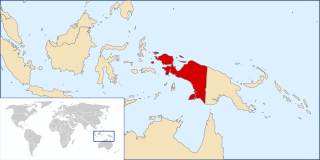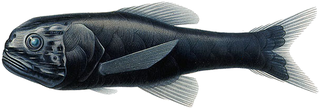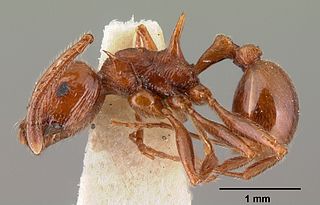
Western New Guinea, also known as Papua, Indonesian New Guinea, and Indonesian Papua, is the western half of the island of New Guinea, formerly Dutch and granted to Indonesia in 1962. Given the island is alternatively named Papua, the region is also called West Papua.

The two-spined blackfish is a species of temperate perch endemic to Australia.
Euastacus bispinosus, the Glenelg spiny crayfish, is a species of southern crawfish in the family Parastacidae.

New Guinea is the world's second-largest island, with an area of 785,753 km2 (303,381 sq mi). Located in Melanesia in the southwestern Pacific Ocean, the island is separated from Australia by the 150-kilometre wide Torres Strait, though both landmasses lie on the same continental shelf, and were united during episodes of low sea level in the Pleistocene glaciations as the combined landmass of Sahul. Numerous smaller islands are located to the west and east. The island's name was given by Spanish explorer Yñigo Ortiz de Retez during his maritime expedition of 1545 due to the resemblance of the indigenous peoples of the island to those in the African region of Guinea.

Astropecten platyacanthus is a sea star of the family Astropectinidae.

Mecopus serrirostris is a species of true weevil family.

Mecopus is a genus of weevils in the beetle family Curculionidae. There are more than 50 described species in Mecopus, found in Southeast Asia, Australia, Africa, and Pacific Islands.
Mecopus may refer to either of two genera:

Hyastenus bispinosus is a species of crab in the family Epialtidae, found around Ambon, the Banda Islands, Timor and the Lembeh Strait off Sulawesi.
Maiestas bispinosus is a species of bug from the Cicadellidae family that is endemic to India. It was formerly placed within Recilia, but a 2009 revision moved it to Maiestas.
Cychrus bispinosus is a species of ground beetle in the subfamily of Carabinae that can be found in the following Chinese provinces: Gansu, Henan, Hubei, Shaanxi, and Sichuan. It was described by Deuve in 1989.

Scopelogadus is a genus of ridgeheads. The generic name derives from the Greek σκόπελος and γάδος.

Mecopus doryphorus is a species of true weevil family.

Pristomyrmex bispinosus is a species of ant in the subfamily Myrmicinae. It was described by Donisthorpe in 1949.

Dolichoderus bispinosus is a species of ant in the genus Dolichoderus. Described by Olivier in 1792, the species is found in many countries, including Belize, Brazil, Colombia, Costa Rica, French Guiana, Guatemala, Guyana, Honduras, Mexico, Panama, Paraguay, Peru, Suriname, Trinidad and Tobago, Venezuela.

Panulirus longipes, the longlegged spiny lobster, is a species of spiny lobster that lives on shallow rocky and coral reefs in the tropical Indo-Pacific region. The International Union for Conservation of Nature has assessed its conservation status as being of "least concern".
Halieutichthys bispinosus, the two-spine batfish or spiny batfish, is a species of marine ray-finned fish belonging to the family Ogcocephalidae, the deep sea batfishes or seabats. This species is found in the Western Atlantic Ocean.
Chelon bispinosus is a ray-finned fish of the family Mugilidae. It is one of seven species in the genus Chelon. It is endemic to waters near Cape Verde in the east central Atlantic Ocean. This species is found in the neritic zone.

Diceratias bispinosus, the two-rod angler, is a species of deep sea marine ray-finned fish belonging to the family Diceratiidae, the double anglers. This species is found in the Indo-Pacific region.

Araneus bispinosus is a species of orb weaver in the spider family Araneidae. It is found in the United States.














